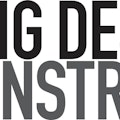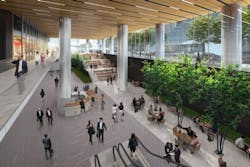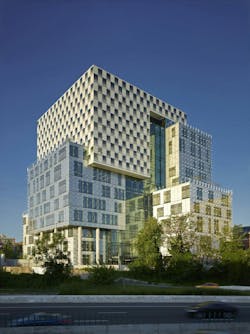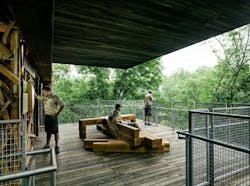Embracing the WELL Building Standard: The next step in green
Did you turn off the lamp on your desk today before you left the office? Did you remember to reach down and turn off the power strip your computer was plugged into? When you got home from work, did you walk through the house turning off all the lights the kids had left on, and did you reach over and turn off the running water while they were brushing their teeth?
You probably did because Earth Day is upon us. It’s the one day a year when reminders are everywhere to do the thousands of small things that can make a difference in the health and well-being of our planet and in our future.
What started in 1970 as a call to protect the environment for future generations, has turned into a global movement. At Skanska, we don’t wait for Earth Day to work toward building a better society. We work hard to bring innovative ideas and sustainable solutions to each and every project we undertake.
LEED certification awarded by the U.S. Green Building Council, has been the standard in our industry for many years for designing and building environmentally preferable and energy-efficient buildings. LEED – and other standards – have evolved raising the bar over the years.
Enter the WELL Building Standard, by the International Well Building Institute. The certification builds on the foundation of LEED, and goes further. WELL version 1 has been in the development stage the last five years, going though both pilot and peer review, and it’s now ready for prime time, with version 2 expected late 2017/early 2018. We expect to see a growing interest in applying this standard to new building construction, actively building human health into the planetary improvements that Earth Day founders originally envisioned.
And with good reason. When you consider that 90% of our time is spent in buildings, how these environments can contribute to workplace productivity, health and wellness is the logical next step in the smart building movement.
Because the U.S. is mostly a service economy, most companies spend less than 10% on their mortgage and utilities and 90% on personnel. The bigger investment, therefore, is in people, so creating an environment that nurtures the health and well-being of a workforce, and reduces sickness, absenteeism and healthcare costs are important. It creates a virtuous cycle in which we all benefit.
We’ve all read about how millennials are reshaping the workplace, seeking live/work/play environments. By 2020, millennials will account for 50% of the global workforce. And this cohort is full of sustainability natives, meaning they see building green as a smart and natural thing to do. I suspect that they will be quick to embrace WELL.
The WELL standard is a win-win for both the building owner and the workforce. From the building owner’s perspective, they can see real savings by lowering absenteeism and presenteeism, where workers are sick on the job, for example. This lost productivity is said to cost U.S. employers more than $570 billion annually (based on the Integrated Benefits Institute and includes workers compensation, disability and group health program expenses). The WELL standard creates and environment built on health and wellness, keeping people active and energetic. On the workforce side, this way of smart building attracts employees who seek to work in spaces and buildings that have a ‘cool’ factor and play a role in improving on the green-built foundation.
What’s WELL all about? WELL addresses seven concepts:
- Air: WELL establishes requirements in buildings that promote clean air and reduce or minimize the sources of indoor air pollution
- Water: WELL promotes safe and clean water through the implementation of proper filtration techniques and regular testing
- Nourishment: WELL requires the availability of fresh and wholesome foods, limits highly-processed ingredients and supports mindful eating
- Light: WELL provides illumination guidelines that minimize disruption to the body’s circadian system, enhance productivity and support good sleep quality
- Fitness: WELL promotes the integration of physical activity into everyday life by providing opportunities and support for an active lifestyle and discouraging sedentary behaviors
- Comfort: WELL considers thermal, acoustic, ergonomic, and olfactory comfort to optimize indoor working environments
- Mind: WELL optimizes cognitive and emotional health through design, technology, and treatment strategies
From a logistical perspective, the organization that certifies LEED projects, the Green Business Certification Institute (GBCI) also certifies WELL projects. This makes it easy to see how close a LEED project is to gaining WELL certification. WELL goes further by requiring information from employer on policies and benefits that go beyond the built environment.
The triple bottom line is about planet, profit and people. WELL doubles down on all three aspects of sustainability building on LEED’s strong foundation. It’s a fast and direct on-ramp to next generation buildings and the people who will occupy them. And we need to keep going.
About the Author

BD+C Staff
The Building Design+Construction editors bring you all things related to the AEC market, from the latest design tools to green building trends.
BD+C editors include David Barista, Editorial Director; John Caulfield, Senior Editor; and Quinn Purcell, Managing Editor.



